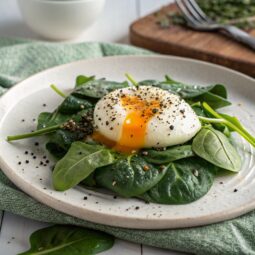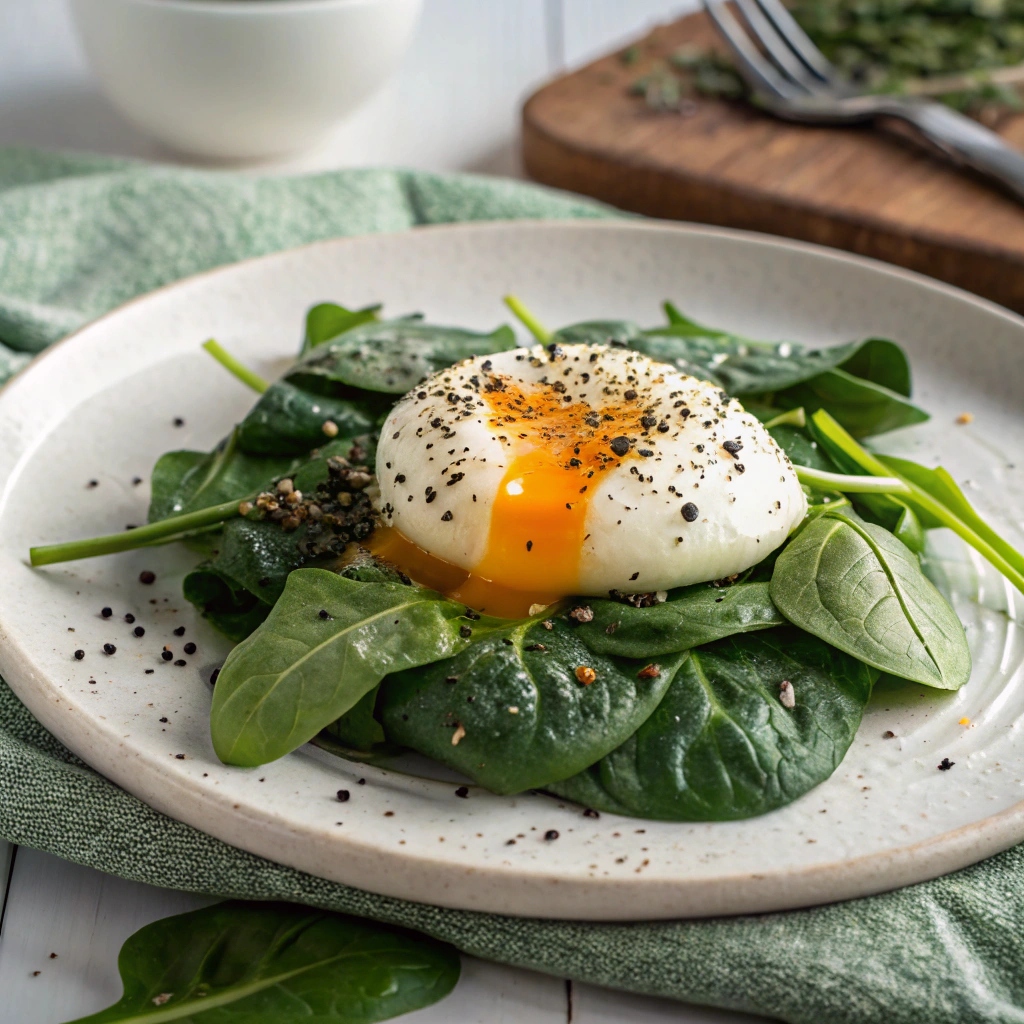Poaching eggs in the oven is a game-changer for breakfast lovers, delivering perfectly silky yolks and tender whites every time. This fuss-free method takes just 20 minutes from start to finish, making it ideal for busy mornings or elegant brunches. The result? A velvety, melt-in-your-mouth texture that pairs beautifully with toast, salads, or avocado.
With a delicate richness and a hint of buttery flavor, these oven-poached eggs are as nutritious as they are delicious. Packed with 6g of protein and only 63 calories per serving, they’re a wholesome way to start your day. Plus, the hands-off approach means no more swirling water or messy stovetop cleanups—just effortless perfection.
What You’ll Need to Poach Eggs in the Oven

- 12 eggs (use fresh eggs for best results)
- 12 Tablespoons water (1 Tablespoon per muffin cup)
- ½ teaspoon salt (adjust to taste or substitute with sea salt)
- ½ teaspoon pepper (optional, or substitute with paprika for a smoky flavor)
Step-by-Step Guide to Perfect Oven-Poached Eggs
- Preheat your oven to 350°F (175°C) to ensure even cooking.
- Prepare the muffin tin: Pour 1 Tablespoon of water into each cup of a standard muffin tin. This creates steam to gently cook the eggs.
- Crack the eggs: Carefully crack one egg into each muffin cup, ensuring the yolks remain intact. (Tip: Crack eggs into a small bowl first to avoid shell fragments.)
- Season: Sprinkle salt and pepper evenly over the eggs, or customize with your favorite seasonings.
- Bake: Place the muffin tin in the preheated oven and bake for 8-10 minutes. The eggs are done when the whites are set and no longer runny, but the yolks are still soft.
- Remove and dry: Use a slotted spoon to carefully scoop out each egg. Pat them dry with a paper towel to remove excess moisture.
- Serve immediately: Enjoy your perfectly poached eggs on toast, salads, or as a protein-packed breakfast!
Perfect Pairings: Sauce and Topping Ideas
Elevate your poached eggs with delicious sauces and toppings! Try a drizzle of hollandaise sauce for a classic Eggs Benedict vibe, or add a sprinkle of crumbled feta and fresh herbs like chives or dill. For a spicy kick, top with sriracha or a dollop of salsa. Avocado slices or a handful of arugula also make great additions for a fresh, healthy twist.
Time-Saving Tips for Busy Mornings
Pre-crack your eggs into a bowl the night before and cover with plastic wrap to save time in the morning. You can also pre-measure the water into the muffin tin and store it in the fridge. When you’re ready, just pop the tin in the oven! This method is perfect for meal prepping or serving a crowd without the hassle of stovetop poaching.
Storage and Reheating Made Simple
Store leftover poached eggs in an airtight container in the fridge for up to 2 days. To reheat, place them in a bowl of warm water for a few minutes or microwave on low power for 15-20 seconds. Avoid overcooking, as this can make the yolks rubbery. These eggs are great for quick breakfast sandwiches or salads!
Recipe Variations to Spice Things Up
Experiment with flavors by adding a pinch of smoked paprika or garlic powder to the water before baking. For a richer taste, swap water with heavy cream or melted butter. You can also add a sprinkle of shredded cheese or a dash of hot sauce to the muffin cups before cracking in the eggs.
Equipment Guidance for Best Results
Use a non-stick muffin tin or lightly grease the cups with cooking spray to make scooping out the eggs easier. A slotted spoon is essential for draining excess water, and a paper towel helps pat the eggs dry for a perfect finish. If you don’t have a muffin tin, ramekins or small oven-safe bowls work too!

How to Poach Eggs in the Oven
Equipment
- muffin tin
- slotted spoon
- paper towel
Ingredients
- 12 eggs
- 12 Tablespoons water
- ½ teaspoon salt
- ½ teaspoon pepper
Instructions
- Preheat your oven to 350 degrees.
- Pour 1 Tablespoon of water into each cup of a muffin tin.
- Crack one egg into each cup, making sure not to break the yolk.
- Bake for 8-10 minutes or until egg whites are no longer runny.
- Scoop out with a slotted spoon and pat dry with a paper towel.

